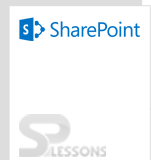They can view Application Pages, Browse User Information, Use Remote Interfaces, and Use Client Integration Features etc.
Limited Access permissions plus: View Items, Open Items, View Versions, Create Alerts, Use Self-Service Site Creation, and View Pages.
Read permissions plus: Add Items, Edit Items, Delete Items, Delete Versions, Browse Directories, Edit Personal User Information, Manage Personal Views, Add/Remove Personal Web Parts, Update Personal Web Parts.
Contribute permissions plus: Manage Lists, Override Check Out, Approve Items, Add and Customize Pages, Apply Themes and Borders, Apply Style Sheets.
Has full control of the Web site.
All permissions
- Site Actions -> Site Settings -> Site Permissions (Users and Permissions)
- Click on Permission Levels (In Ribbon)
- Add a Permission Level (Menu)
- Name = Add or Edit Permission, Check Add Items and Edit Items checkboxes -> Create
- Site Actions -> Site Settings -> Site Permissions (Users and Permissions)
- Select Grant Permissions (In Ribbon)
- Enter the User/Group name. Select Grant user permission directly and check the required permission level.
- By default, the permission given to the site automatically applies to the Lists as well. We can override these settings and give permissions
- Open List -> Settings -> List Settings -> Permissions for this list



